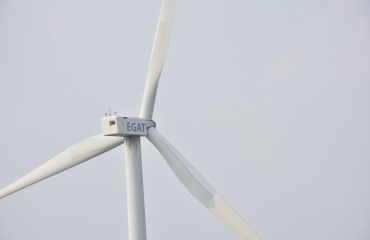body { font-family: sans-serif; line-height: 1.6; }
h1, h2, h3 { color: #333; }
img { max-width: 100%; height: auto; }
Prefabricated steel structures are revolutionizing the construction industry, offering speed, efficiency, and cost-effectiveness unmatched by traditional methods. From towering warehouses to sleek office buildings, these structures are proving their versatility and resilience across diverse applications. This comprehensive guide delves into the world of prefabricated steel, exploring its advantages, design process, applications, cost considerations, and future trends.
The Advantages of Prefabricated Steel Structures
Prefabricated steel structures boast a multitude of benefits compared to traditional construction methods. The most significant advantages include:
- Speed and Efficiency: Fabrication occurs off-site in a controlled environment, significantly reducing on-site construction time. This accelerated timeline translates to faster project completion and quicker return on investment.
- Cost-Effectiveness: While initial material costs might seem higher, the reduced labor costs, faster construction time, and minimized waste contribute to overall cost savings. The precision of prefabrication also minimizes material waste.
- Durability and Strength: Steel is inherently strong and resistant to various environmental factors like fire, pests, and extreme weather conditions. This translates to longer lifespan and lower maintenance costs.
- Design Flexibility: Prefabricated steel allows for a wide range of design options, accommodating diverse architectural styles and project requirements. Complex designs can be achieved with precision and accuracy.
- Sustainability: Steel is a highly recyclable material, making prefabricated steel structures environmentally friendly. The reduced construction time also minimizes the environmental impact of the project.
The Design and Fabrication Process
The design and fabrication of prefabricated steel structures involve a meticulous process:
- Detailed Design: Architects and engineers create detailed 3D models and blueprints, specifying every component and connection.
- Fabrication: Steel components are precisely cut, shaped, and welded in a controlled factory environment, ensuring accuracy and quality control.
- Surface Treatment: Components undergo surface treatment, such as painting or galvanizing, to protect against corrosion.
- Transportation: Prefabricated components are transported to the construction site, often requiring specialized equipment for larger pieces.
- On-Site Assembly: The prefabricated components are assembled on-site, typically a faster and simpler process due to the precision of the factory fabrication.
This streamlined process minimizes errors and ensures a consistent, high-quality end product.
Diverse Applications of Prefabricated Steel
The versatility of prefabricated steel makes it suitable for a wide range of applications, including:
- Industrial Buildings: Warehouses, factories, and manufacturing plants benefit from the strength and durability of steel structures.
- Commercial Buildings: Office buildings, retail spaces, and shopping malls can be efficiently constructed using prefabricated steel.
- Residential Buildings: Prefabricated steel is increasingly used in residential construction, offering rapid construction and design flexibility.
- Agricultural Structures: Barns, sheds, and other agricultural buildings benefit from the strength and weather resistance of steel.
- Infrastructure Projects: Bridges, stadiums, and other large-scale infrastructure projects can utilize prefabricated steel components for efficient construction.
Cost Considerations and Budgeting
While the initial material costs of steel might be higher than some traditional materials, the overall cost-effectiveness of prefabricated steel structures is significant. Factors influencing the final cost include:
- Project Size and Complexity: Larger and more complex projects will generally have higher costs.
- Steel Prices: Fluctuations in steel prices directly impact the overall cost.
- Transportation Costs: The distance between the fabrication facility and the construction site affects transportation costs.
- Labor Costs: Reduced labor needs compared to traditional construction methods contribute to cost savings.
- Design and Engineering Fees: Professional fees for design and engineering services are included in the overall budget.
The Future of Prefabricated Steel Structures
The future of prefabricated steel structures looks bright. Ongoing innovations and advancements are shaping the industry, including:
- Modular Construction: The integration of modular construction techniques further enhances speed and efficiency.
- Advanced Materials: The development of high-strength, lightweight steel alloys improves structural performance and reduces weight.
- Sustainable Practices: Increased focus on sustainable practices, including using recycled steel and minimizing waste, is gaining momentum.
- Automation and Robotics: Automation and robotics are improving the precision and speed of fabrication processes.
- Digitalization: The use of Building Information Modeling (BIM) and other digital technologies enhances design, fabrication, and construction management.
Prefabricated steel structures are poised to play an increasingly vital role in meeting the global demand for efficient and sustainable construction solutions.
Tags: Prefabricated Steel, Steel Structures, Steel Construction, Modular Construction, Sustainable Construction




